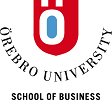No 2005:2: After outsourcing – the outsourced unit: Dependence, capabilities and strategy
Leif Sanner ()
Additional contact information
Leif Sanner: Department of Business, Economics, Statistics and Informatics, Postal: Örebro University, Department of Business, Economics, Statistics and Informatics, SE - 701 82 ÖREBRO, Sweden
Abstract: Outsourcing is in this study defined as the transfer of responsibility and activities, including relevant assets and resources, from a user to a legally separate party, that becomes a vendor to the user. An outsourcer transfers activities to an outsourced unit. The situation of the outsourced unit becomes problematic in its provision of goods or services to both the outsourcer and other buyers. Specifically, the outsourced unit after outsourcing has ample and tight bonds to the outsourcer and there is a need to strike a balance between dependence and independence towards the outsourcer. The investigated problem reported in this article is: How can the outsourced unit strategically handle its situation after the outsourcing? Issues at stake for the outsourced unit are: How to hand le dependence on the outsourcer. How to use and develop competitive advantages, capabilities and resources. How to develop and implement business strategy.
Dependence can reside in asset specificity: Relationships with the outsourcer and business partners, need for the exchange partner’s competence, joint governance systems, the relative volume of goods/services provided and/or specialization of goods/services towards the exchange partner. The structure of the market may make it more or less possible to substitute one exchange partner for another.
For sustainable competitive advantage, the possession of or access to strategic capabilities and resources is needed, which the outsourced unit accumulates and deploys. The firm must meet the demand with a supply based on its capabilities and resources. The outsourced unit obviously starts with resources collected and capabilities developed by the out sourcer. It is its management’s task to identify and muster the resources and strategic capabilities of the firm. Inherited capabilities and resources may thus need to be developed into capabilities that are important for the outsourcer’s new role and position.
In two in-depth cases outsourced units are studied with focus on dependence on the outsourcer, the units’ guiding competitive advantages, their capabilities and resources. Two distinct strategies are identified. A strategy of conjunction with the outsourcer is to make use of competitive advantages, align capabilities and resources towards the outsourcer’s needs and to build on dependence by holding specific assets of interest for the outsourcer. A strategy of disjunction implies reducing dependence on the outsourcer by seeking new alliances and markets outside the outsourcer-outsourced relation. Disharmony with either of the strategies is discussed as a reason for strategic change.
Keywords: Outsourcing; business relations; strategy
JEL-codes: M10
22 pages, March 16, 2005
Price: 120
Full text files
wp-2-2005.pdf
Questions (including download problems) about the papers in this series should be directed to ()
Report other problems with accessing this service to Sune Karlsson ().
RePEc:hhs:oruesi:2005_002This page generated on 2024-09-13 22:16:31.

